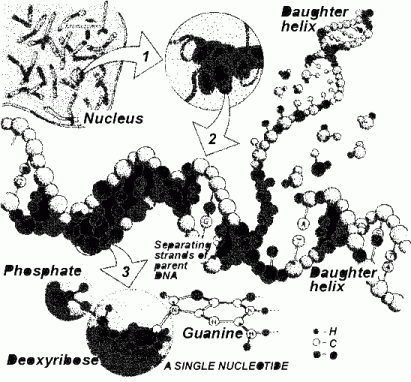Is every link of proteins to DNA important in the life of the cell. Researchers from the University of Berkeley claim that the conventional methods for identifying proteins involved in the control of gene expression in cells are inaccurate

One of the common methods in the study of gene expression control is the ChIP-chip. With this method it is possible to isolate and identify the sequences in the DNA to which the transcription factors bind. The question asked is - is every link of a transcription factor to the DNA sequences of Carthian importance.
A group of researchers from the University of Berkeley in California examined the control system that controls the development of Drosophila fly embryos. Drosophila is a very common model animal in genetic studies, the chain of transcription factors involved in controlling the development of the embryo, its tissues and organs, and determining its shape over time are mostly known. The researchers chose to focus on six transcription factors in the developing Drosophila, known to be involved in controlling the expression of several dozen genes, and examined which sites on the surface of the DNA they bind to. They found that there are certain regions recognized by several transcription factors, and their combined binding to that region enables the control of the nearby target gene, a phenomenon known in many biological systems. On the other hand, to their surprise, they found that these transcription factors recognize and bind to thousands of sites on the surface of the DNA. A much larger number than the number of genes controlled by them. The binding to many of the sites identified by the researchers is apparently not important in the control of gene expression.
What is the importance of the binding of the transcription factors other than in the control of gene expression? It is possible that they affect the binding and activity of other transcription factors or that they play a role in determining the structure of the chromosome (the form in which the DNA is organized) or in the duplication or repair processes of the DNA. Another possibility is - that it doesn't matter at all. According to Prof. Michael Eisen, one of the leaders of the research, today we have the ability to observe molecular events in living systems, with high resolution, and there is a natural tendency to think that everything that happens in the cell is of high importance, but this may not necessarily be accurate.
From the research it appears that the concept, in the accepted approach, according to which the binding of a transcription factor to DNA indicates its involvement in the control of the genes in its vicinity (relying on the ChIP-chip method) may be inaccurate and even wrong. These findings have implications regarding how such results should be treated.

2 תגובות
It seems to me on the face of it, that each cell is a kind of "primitive" computer, which is not necessarily efficient, or has "passed" some kind of optimization to operate efficiently.
And what determined the existence of the unnecessary information was evolution.
which does not depend only on the genetic load.